Even though I had more pressing matters to attend to, I couldn’t help but look at the historic letters that someone let me view (very graciously!) from their private collection. The last document was a bland letter from the mayor’s office, but, the letterhead is anything but bland. Look at the St. Clair Tunnel (!), an engineering wonder of the time, but now, a basically hidden thing. And while I still had other matters to attend to, this post just wouldn’t wait.
I wish I could provide you a large, high resolution banner image (when the site is redone, these types of images will be available), but for now I’ll post some no-longer-extant high-resolution details from the letterhead’s banner, below. And, below those, you’ll find the map that actually was printed on the back side of the letterhead, where Port Huron is implied to be the center of the known world (or region, at least).
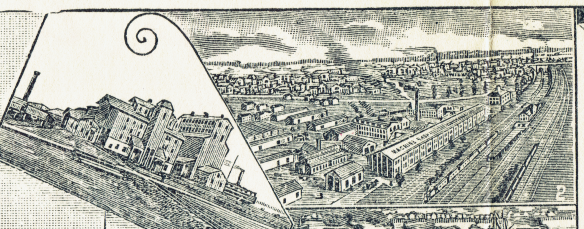
“Flouring Mill and Elevator,” and Port Huron Engine and Thresher Company works, along the Tunnel tracks crossing 24th Street (the oldest plant), as depicted on 1896 letterhead.
As can be noted from the caption, the pictures above show an unnamed flour mill (with elevator), and the Port Huron Engine and Thresher Company’s original plant. It had recently changed its name from Upton Works, and this is the first image I can remember seeing of this factory and its grounds. Neither of these plants exist today.
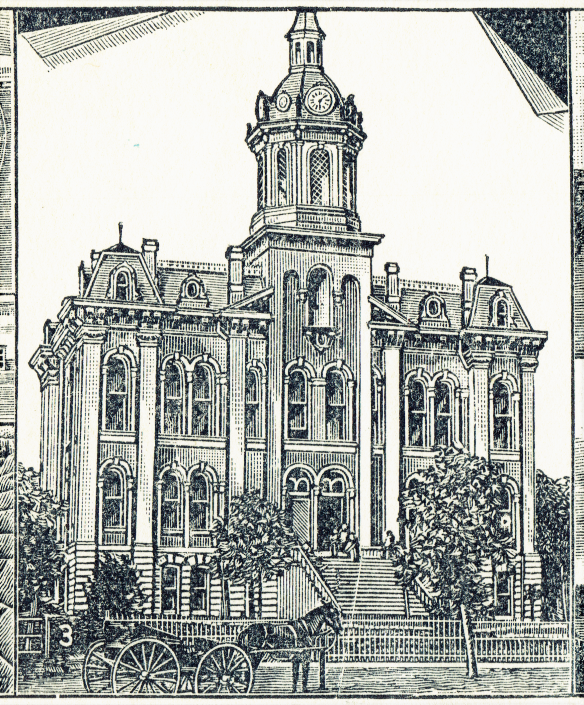
The original City-County building, built 1873 (the county seat moved from St. Clair to Port Huron in 1871). Wings were added and Second Empire style elements removed (unfortunately) in 1896, and it was razed after a fire in 1949.
The City Hall, originally the City-County Hall, of 1873 (depicted here) was enlarged and altered in 1896 (the year the letterhead was used). The change made it look Disneyesque. Disney came later, of course, but that doesn’t exculpate the sin of erasing the stately Second Empire architecture it had had. Many, perhaps most, of Port Huron’s Second Empire buildings are now gone.
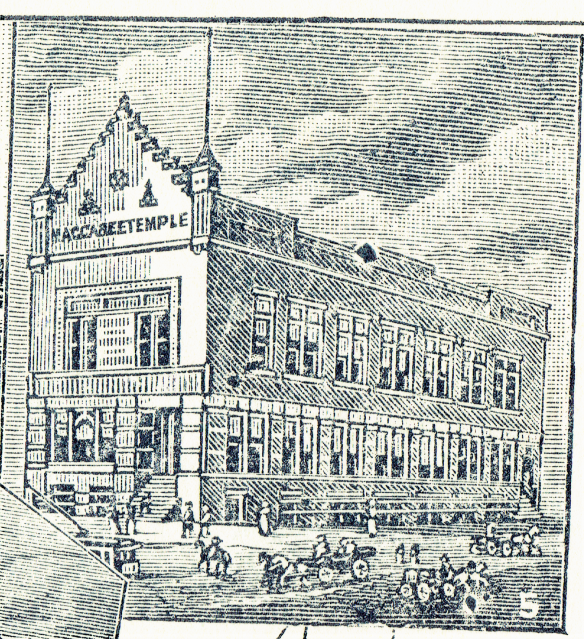
The Maccabee Temple. This was the first temple, which became their offices after a new, grand structure was built in 1892. Neither of these temples stands today.
The old Maccabee Temple. How often can one say “it’s so sad it’s gone”? If you “Google” the corner of Huron Avenue and Bard Street in Port Huron, I think you’ll agree that that intersection would look better if the building was still there. Thankfully, the Citadel Building at that intersection is indeed still standing and has been going through renovations.
I didn’t include the image of the “Dry dock,” since it was unnamed. There were a number of dry docks in Port Huron, building and repairing ships, none of which are now in operation. Below is the map included on the back of the mayor’s letterhead, showing rail lines. No caption was included with the image, so one can assume that the point of it “went without saying.”
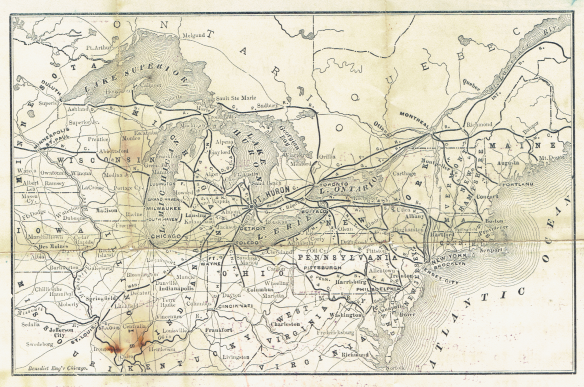
Unidentified rail line map on the backside of the Mayor’s letterhead. “Benedict Eng’r Chicago” is in lower left corner.
PS: Because a reader requested it, below is the image of the “dry dock” (what appears to be a name, artist’s or printer’s, is in the lower right as well).

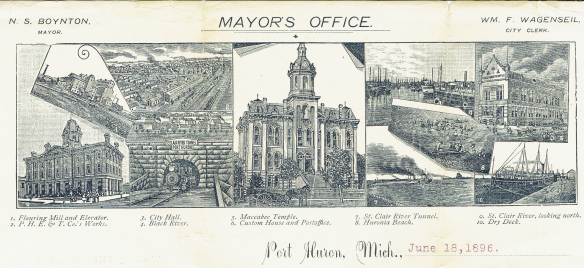
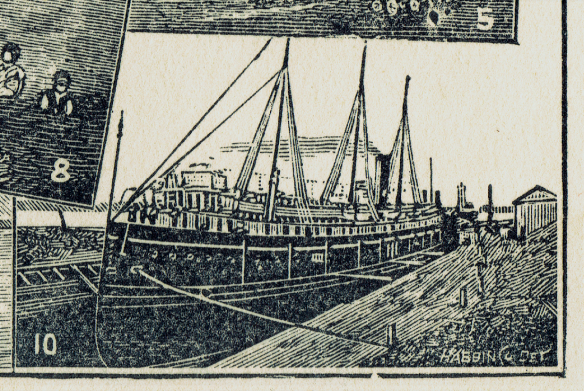
Wow! That was some great letterhead. Thanks for posting.I would like to see the picture of the dry dock some time.
LikeLike
Thanks Bob. I should be able to do the dry dock image tomorrow – I’ll put it up under a “PS.”
LikeLike
Wow! That was some great letterhead. Thanks for posting.I would like to see the picture of the dry dock some time. Some great pictures as well in your dry dock section. That is the clearest photo I have seen of the explosion and one I have never seen of (I assume) The Jenks Shipyard. I did have a question on your dry dock section. I never heard of the Reid dry dock at the location you mentioned. According to “The Salvager” Reid bought the Dunford & Alverson dry dock and used it for their dry dock. Bob
LikeLike
Hey Bob – thanks! That link is to an SC4 write-up, and I linked to it just for readers’ information. It’s weird that they don’t label photos (this isn’t the first one I’ve seen this way)! Anyway, it’s a geography department piece, so maybe that department would know who wrote it up and who would have that information (perhaps it’s incorrect and they should change it).
LikeLike
Just wanted to make sure my video on the Reids was correct and I think it is. Thanks for all the work you are doing. I know that sometimes you feel that your work is not appreciated because sometimes I feel that way as well. I will have a couple of thousand views on my page and maybe 20 likes or 3000 views on a video and one comment. What is wrong with that picture. Lol. I come to the conclusion that people just don’t think of showing their appreciation even if they enjoy the posted work, but like you I enjoy what I’m doing so will keep on. Keep up the good work.
LikeLiked by 1 person
PS. Thanks for posting the picture of the dry dock. Looks like the Wolverine Dry Dock.
LikeLiked by 1 person
I was going to say it looks like the Wolverine Dry Dock as well. Henry Botsford was the owner, I believe. Great and interesting post Vicki.
LikeLike
I was also wondering if the flour mill was the Davidson & McMorran mill. I believe it caught fire in May of 1895 and the elevator was destroyed.
LikeLike